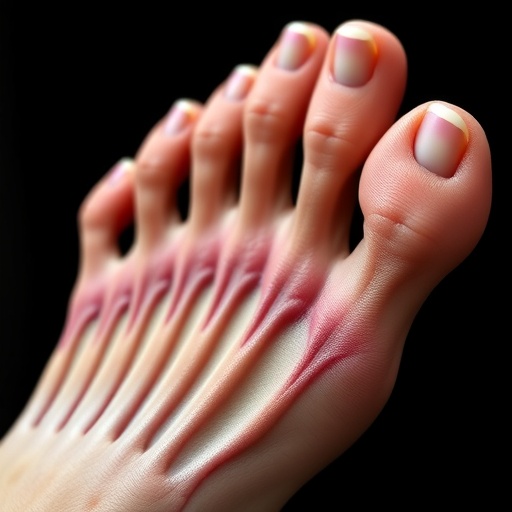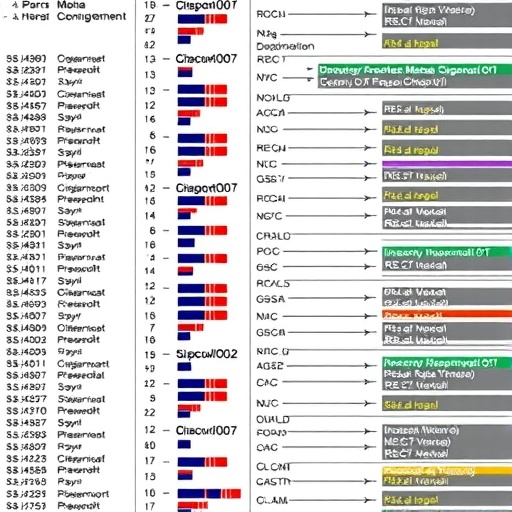In recent years, the management of diabetes has evolved significantly, driven by technological innovations that promise to enhance patient outcomes. One of the most compelling advancements is the advent of real-time continuous glucose monitoring (CGM), a system that allows individuals to track their glucose levels in real time. This device offers a more comprehensive view of glucose fluctuations compared to traditional self-monitoring of blood glucose (SMBG) methods. With the increasing prevalence of type 2 diabetes, especially among those requiring insulin, assessing the cost-utility of these monitoring systems has become a focal point for researchers and healthcare professionals alike.
The study conducted by Jendle and colleagues focuses on comparing the cost-utility of CGM against SMBG in Swedish patients with insulin-treated type 2 diabetes. By employing a robust methodological framework, the researchers sought to determine not only the effectiveness of these monitoring systems in managing diabetes but also their economic impact on healthcare systems. The rising costs associated with diabetes management necessitate thorough investigations into which methodologies yield the greatest benefits for patients relative to their costs.
Cost-utility analysis is pivotal in healthcare as it helps determine the value of medical interventions by comparing their costs to the health outcomes they generate. In diabetes management, this becomes particularly relevant since the disease can lead to numerous complications if not effectively controlled. Patients with type 2 diabetes experience a range of symptoms and complications, making effective monitoring essential for maintaining optimal glycemic control. The rise of CGM technology introduces a potential breakthrough in addressing these concerns since it provides real-time data allowing for immediate adjustments in treatment plans.
One of the advantages of CGM over SMBG lies in its ability to offer continuous data on glucose levels throughout the day. Users benefit from alerts when their glucose levels rise or fall outside of recommended ranges, empowering them to take action before severe complications arise. This immediate feedback loop creates an environment where patients can make informed decisions about their health on the go, improving overall glycemic control.
However, the accessibility of CGM devices compared to traditional SMBG methods raises questions about feasibility and cost-effectiveness. The initial investment required for a CGM system can be notable, and while it may lead to better health outcomes, the economic implications warrant further scrutiny. Jendle’s study meticulously investigates these factors to provide the necessary clarity for both healthcare providers and patients contemplating their monitoring options.
In addition to the economic analysis, the study also considers the subjective experiences of patients using these technologies. User satisfaction is a crucial element in assessing the overall utility of any healthcare intervention. By incorporating patient-reported outcomes, the researchers aim to gather a well-rounded perspective on the advantages and disadvantages of employing CGM versus SMBG. Insights from individuals managing their diabetes daily are invaluable in crafting more effective treatment pathways.
The growing body of literature surrounding CGM technology highlights several aspects that favor its adoption. Research indicates that patients using CGM experienced fewer instances of hypoglycemia and had better control over their diabetes, which can translate to reduced long-term complications. Furthermore, as health systems worldwide continue to adapt to value-based care models, the emphasis on interventions yielding better outcomes at lower costs becomes increasingly crucial.
Implementation challenges remain, particularly in terms of reimbursement policies and guidelines for CGM usage within healthcare frameworks. Awareness among healthcare providers regarding the latest evidence supporting CGM technology’s efficacy is critical. If these professionals understand the cost-benefit profile of CGM use, they can better advocate for its adoption among their patients, leading to improved diabetes care.
The implications of Jendle’s study extend beyond clinical practice, influencing policymakers and insurance providers as well. As healthcare systems face mounting pressures to manage chronic diseases more effectively and efficiently, findings from cost-utility analyses play a pivotal role in shaping reimbursement strategies for new technologies. If CGM proves cost-effective, it could lead to broader insurance coverage, thus making this technology accessible to a larger population of patients.
In conclusion, the research conducted by Jendle and his team signifies a substantial step toward understanding the viability of continuous glucose monitoring in the treatment of type 2 diabetes. As the landscape of diabetes care continues to evolve, the integration of innovative monitoring solutions will play a crucial role in shaping patient outcomes and healthcare costs. The comparative assessment of CGM and SMBG offered in this study provides a valuable resource for clinicians, patients, and decision-makers alike, transcending the traditional boundaries of diabetes management.
Moving forward, the ongoing investigation into monitoring technologies will likely yield even more nuanced insights, further informing best practices in the realm of diabetes care. With future studies, the scientific community can strive for more significant advancements in personalized medicine, ultimately enhancing the quality of life for individuals living with insulin-treated type 2 diabetes. The relentless pursuit of improvement in diabetes management will not only empower patients but also pave the way for innovations that could revolutionize care processes across global healthcare systems.
As we look ahead to the unfolding impacts of such studies, the focus must remain on patient-centered approaches that prioritize both health outcomes and economic sustainability. By embracing evidence-based practices and harnessing technology effectively, stakeholders can drive forward meaningful change in the treatment landscape for diabetes, showcasing the potential of research to bridge the gap between innovation and real-world application.
Subject of Research: Cost-Utility of Real-Time Continuous Glucose Monitoring Versus Self-monitoring of Blood Glucose in Insulin-Treated Type 2 Diabetes.
Article Title: Cost-Utility of Real-Time Continuous Glucose Monitoring Versus Self-monitoring of Blood Glucose in People with Insulin-Treated Type 2 Diabetes in Sweden.
Article References:
Jendle, J., Ilham, S., Alshannaq, H. et al. Cost-Utility of Real-Time Continuous Glucose Monitoring Versus Self-monitoring of Blood Glucose in People with Insulin-Treated Type 2 Diabetes in Sweden.
Diabetes Ther (2025). https://doi.org/10.1007/s13300-025-01811-x
Image Credits: AI Generated
DOI: 10.1007/s13300-025-01811-x
Keywords: Continuous Glucose Monitoring, Self-monitoring of Blood Glucose, Type 2 Diabetes, Cost-Utility Analysis, Diabetes Management.
Tags: advancements in diabetes monitoringcontinuous glucose monitoringcost-utility analysis in healthcarediabetes management technologieseconomic impact of diabetes careeffectiveness of glucose monitoring systemsevaluating diabetes management strategieshealthcare costs in diabetes treatmentinsulin-treated type 2 diabetespatient outcomes in diabetes managementreal-time glucose trackingtraditional blood glucose monitoring methods





